Spring is right around the corner, which means longer days, warmer temperatures, and plants bounding back to life. We’re sharing our Grow-How® expert tips to ease your indoor plants into the spring season.
Many plants go dormant over the winter, allowing them to conserve energy during the months they can’t function efficiently. Dormancy can be triggered by a few different factors, including temperature, soil moisture, and day length. For houseplants living in a controlled environment like our homes, shorter days in the autumn are often what initiates dormancy.
We’ll note that many houseplants don’t go dormant in the winter. Indoor heating, regular watering, and the use of grow lights or even normal household lights can be enough to keep your plant actively growing. Even so, with the changing seasons, your plant will likely experience a growth spurt, so these spring care tips still apply!
As days get longer the closer we get to spring, you can expect your houseplants to wake up from their winter dormancy. Read on to learn about the spring care tips we recommend to help your plants adjust, which are best done anytime from late winter to early spring.
Start With The Roots
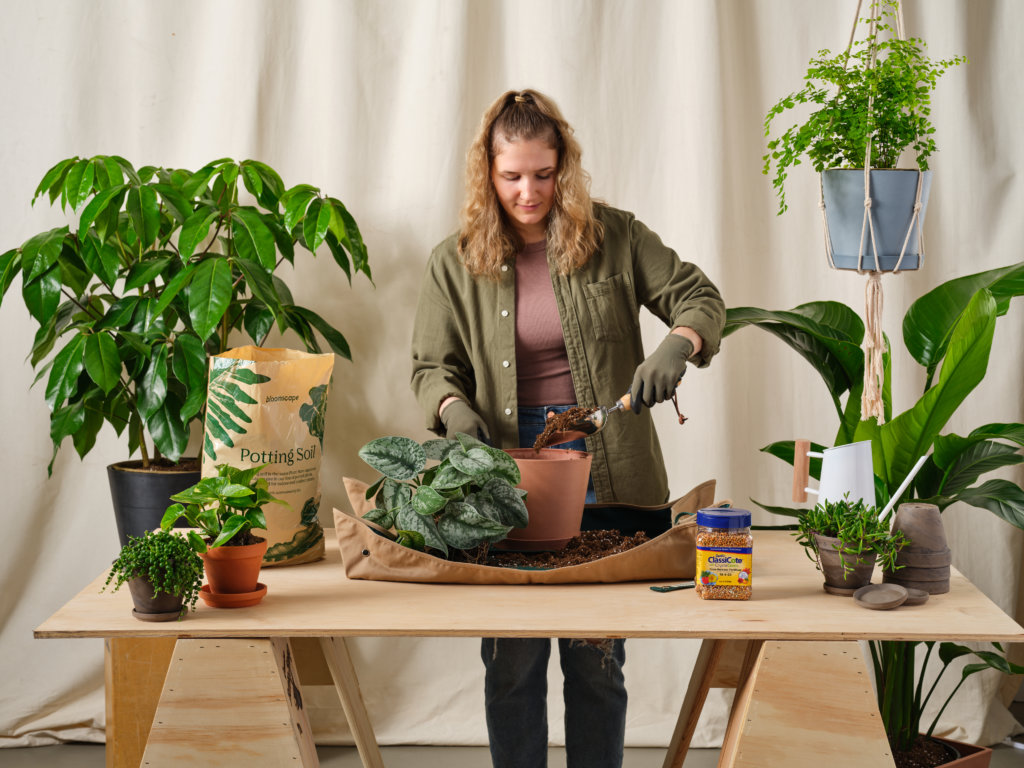
First things first—let’s get the dirty work out of the way! It’s easy to forget about roots, but they are a critical part of your plant’s overall health. Even if your plant is thriving, it’s best to take a peek at least once a year.
To check the roots, gently slide your plant out of its pot. If you see roots winding all the way around the outside of the rootball or see more roots than soil, it’s time to repot!
For larger plants, it may not be easy to remove the pot. A few signs that repotting is in order: roots are creeping along the top of the soil, roots are growing out of the drainage hole, or water rushes through the pot when watering. Most plants won’t need to be repotted more than once a year, and some can go three or more years between. If repotting isn’t needed this year, skip ahead to the next section.
Ready to repot?
Here are a few items we recommend:
- Fresh potting soil formulated for houseplants
- A new pot that’s an inch or two wider than the current pot and that has a drainage hole
- If you prefer to keep your hands clean, a pair of garden gloves will help do the trick
- A useful soil scoop to help you move soil and repot your plant with ease
One tip we’d like to share—disturb the roots as little as possible! Root systems are complex, and damage can be stressful for your plant. For healthy plants, there’s no need to break up the rootball; simply transfer it to the new pot and backfill with fresh potting mix. There are a few exceptions to this rule: if you find rotten roots, carefully cut them out with clean snips, or if root growth is dense with little or no soil, gently unwind the outer roots before repotting.
For a step-by-step tutorial on how to repot your plants, check out this article.
Spring Cleaning For Your Plants
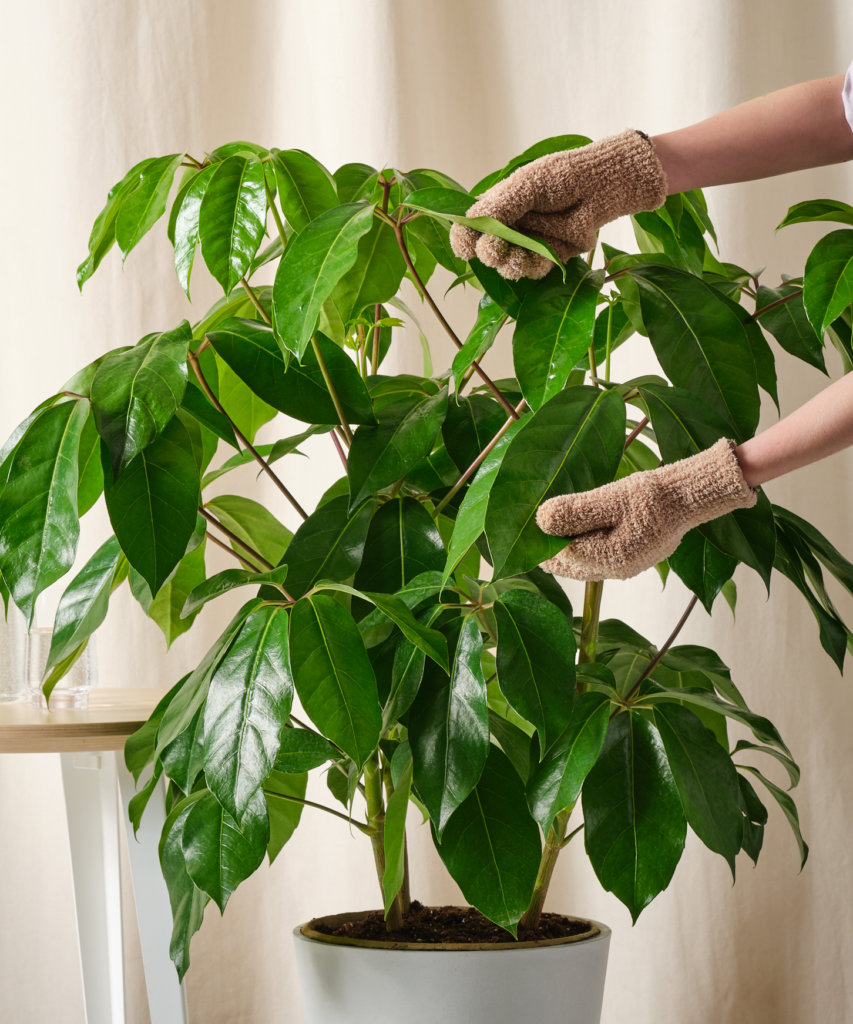
We all love a fresh start in spring, and your plants are no exception. Set aside a few hours to tackle the dust, debris and other mess that collects on and around your plants over the winter. Your home will feel refreshed and your plants will be primed for more light and new growth!
Our spring cleaning list:
- Clear plants out of their spots and wipe down the floor or surface they were sitting on, along with the outside of the pot and saucer.
- Remove dead leaves and other debris that has collected on the soil surface.
- Grab some plant snips and remove any leaves that are yellow or brown. Trim away brown leaf tips and edges, which often plague houseplants over the dry winter months. This is also a great time to tackle any shaping or pruning! Here are some tips for how to trim your plants.
- Carefully examine remaining leaves for signs of pest and disease. Any bumps, splotches, or sunken yellow or brown areas are a potential sign of problems. A copper fungicide spray for disease and insecticidal soap for pests are good basic treatments to have on hand. If you’re not sure what you’re dealing with, reach out to the Grow-How® Team for help!
- Finally, wipe down each leaf using a wet cloth or dusting gloves. Leaves can gather a layer of dust that limits their ability to function effectively, so cleaning not only makes them look more beautiful, it also helps them grow faster.
Seasonal Light Changes
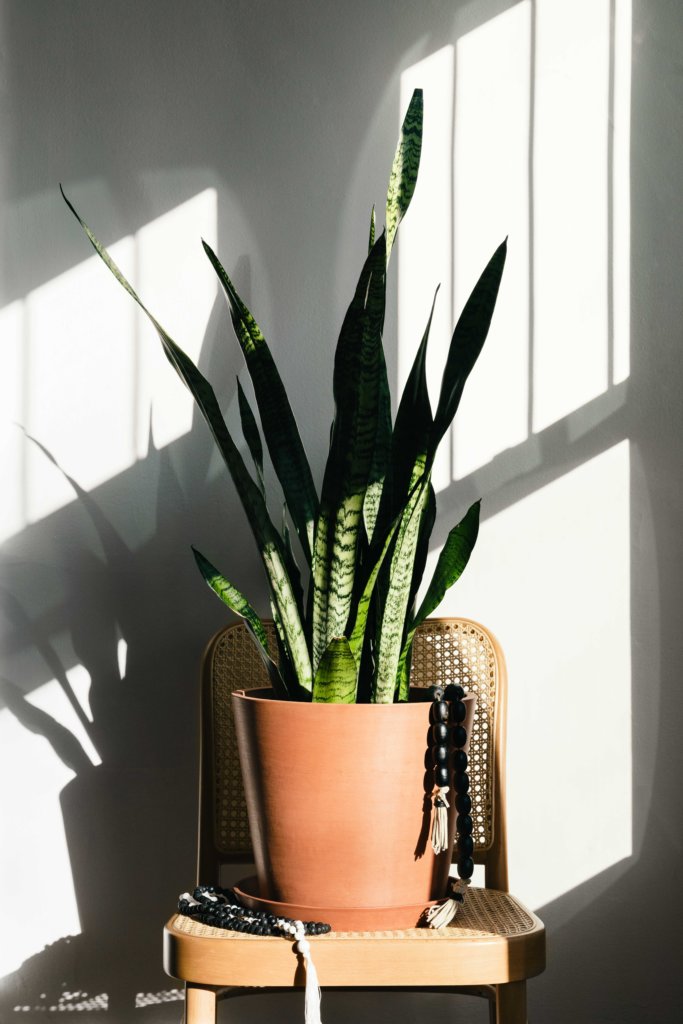
Next up, lighting! As the northern hemisphere moves toward summer, the days get longer and the sun passes at a higher angle in the sky. This means a few things for your indoor plants: they’ll receive longer stretches of light throughout the day, and the pattern of direct sunlight streaming through your windows will change. Check on your plants at different points through the day and adjust their placement to ensure they’re getting the ideal amount of light.
Another consideration is whether you have trees outside your windows that lose their leaves in the winter. Once they leaf out in the spring, they’ll block sunlight that may have been shining indoors over the winter. If this is the case, you may want to move those plants closer to the window to maximize the amount of bright, indirect light they receive.
Brush up on your lighting knowledge with Indoor Plant Lighting 101.
Watering Adjustments
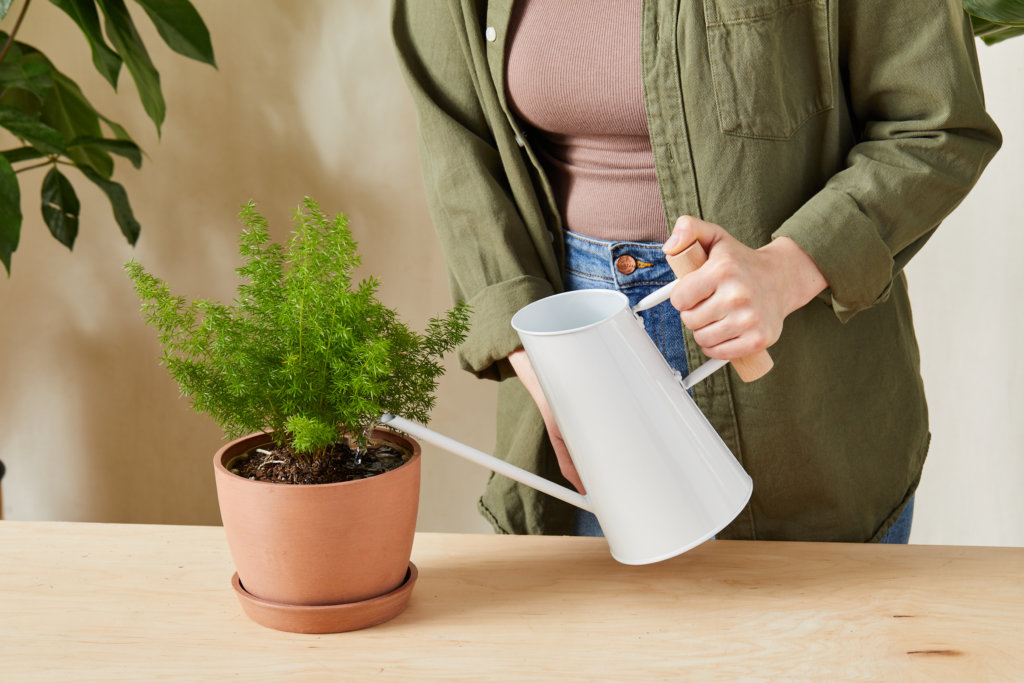
With brighter light, warmer temperatures, and growth gearing up, your plant is getting all the signals that tell it spring is on the way. You can jump start spring growth by paying close attention to your plant’s soil moisture. You’ll notice your plant beginning to use water more quickly, thanks to its roots, stems, and leaves all experiencing a flush of growth. This means that you’ll need to begin watering it more frequently.
Always be sure to water deeply and thoroughly, allowing water to soak into the soil until it begins to drain out the hole at the bottom of the pot. Be sure to remove any excess water that collects in the saucer which can cause root rot. It’s important that your pot has a drainage hole so that you can water thoroughly without fear of overwatering.
Master your watering technique with 6 Tips To Properly Water Your Plants.
Nurturing New Growth
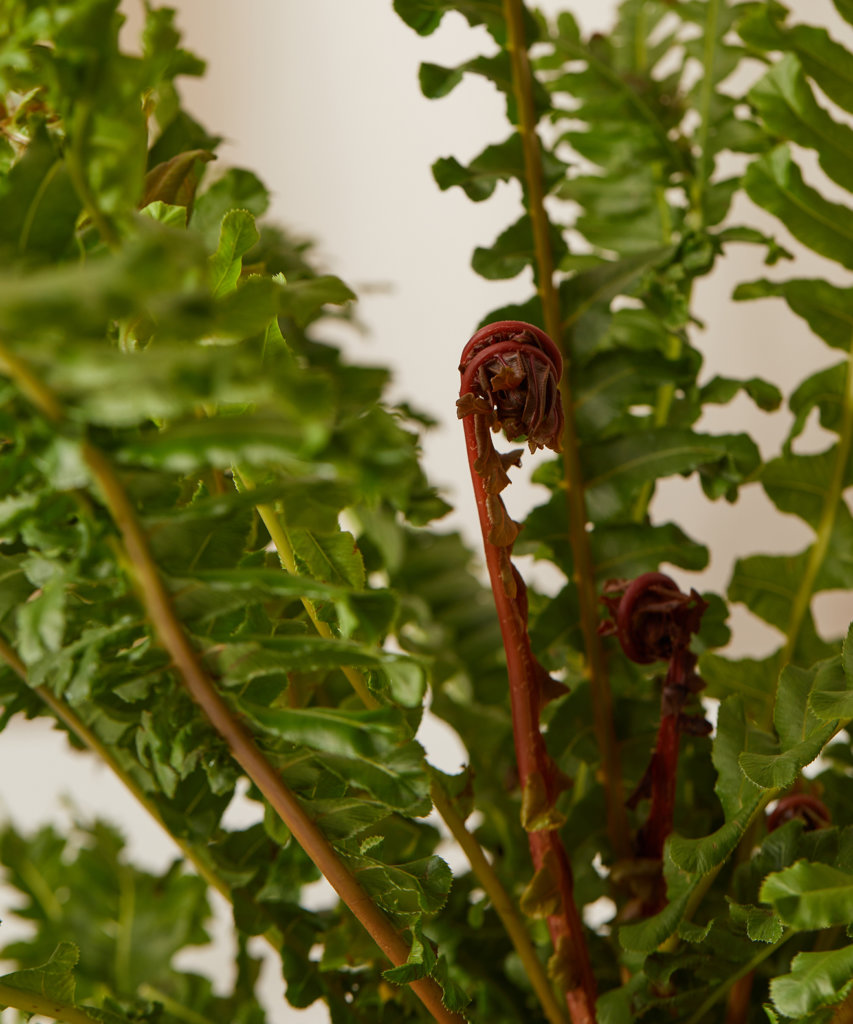
A sure sign your houseplant is experiencing all the spring feels is the welcome sight of fresh, new growth. If you’ve followed the steps in this guide, your plant will be on the brink of a growth spurt!
Signs of new growth can be alarming to the uninitiated. If you notice new growth emerging or unfurling at the ends of stems or from the soil at the base of your plant, that’s a sign of a healthy and thriving plant. See a few examples of new growth in this guide.
Once you spot new growth, it’s time to start fertilizing. We recommend a balanced, water-soluble houseplant fertilizer like this one. Always follow the directions on the label. If you’re nervous about over-applying fertilizer, it’s OK to dilute your mix to half-strength by doubling up on the amount of water. This approach ensures your plants get the nutrients they crave in smaller doses.
Almost every potted plant requires fertilizer to sustain its growth, but each type of houseplant has its own preference for fertilizing frequency. Check out our plant care guides for the specifics, and read more tips on how to fertilize your plants.



